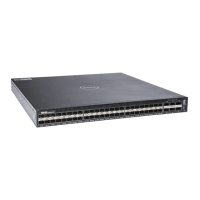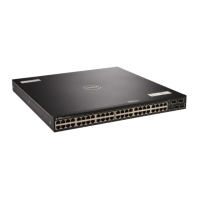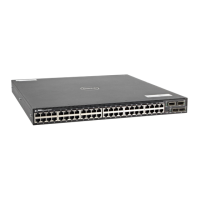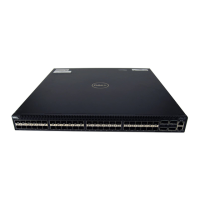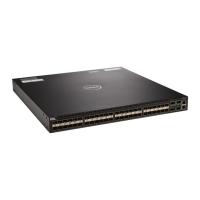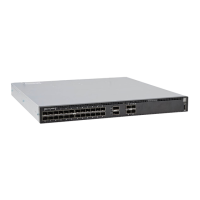them when the threshold value is exceeded. If you configure ECN for WRED, devices employ ECN to mark
the packets and reduce the rate of sending packets in a congested network.
In a best-effort network topology, data packets are transmitted in a manner in which latency or throughput is
not maintained to be at an effective level. Packets are dropped when the network experiences a large traffic
load. This best-effort network deployment is not suitable for applications that are time-sensitive, such as
video on demand (VoD) or voice over IP (VoIP) applications. In such cases, you can use ECN in conjunction
with WRED to resolve the dropping of packets under congested conditions.
Using ECN, the packets are marked for transmission at a later time after the network recovers from the heavy
traffic state to an optimal load. In this manner, enhanced performance and throughput are achieved. Also, the
devices can respond to congestion before a queue overflows and packets are dropped, enabling improved
queue management.
When a packet reaches the device with ECN enabled for WRED, the average queue size is computed. To
measure the average queue size, a weight factor is used. This weight factor is user-configurable. You can use
the wred weight number command to configure the weight for the WRED average queue size. The mark
probability value is the number of packets dropped when the average queue size reaches the maximum
threshold value.
The weight factor is set to zero by default, which causes the same behavior as dropping of packets by WRED
during network loads or also called instantaneous ECN marking. In a topology in which congestion of the
network varies over time, you can specify a weight to enable a smooth, seamless averaging of packets to
handle the sudden overload of packets based on the previous time sampling performed. You can specify the
weight parameter for front-end and backplane ports separately in the range of 0 through 15.
You can enable WRED and ECN capabilities per queue for granularity. You can disable these functionality per
queue, and you can also specify the minimum and maximum buffer thresholds for each color-coding of the
packets. You can configure maximum drop rate percentage of yellow and green profiles. You can set up
these parameters for both front-end and backplane ports.
Global Service Pools With WRED and ECN
Settings
Support for global service pools is now available. You can configure global service pools that are shared
buffer pools accessed by multiple queues when the minimum guaranteed buffers for the queue are
consumed. Two service pools are used– one for loss-based queues and the other for lossless (priority-based
flow control (PFC)) queues. You can enable WRED and ECN configuration on the global service-pools.
You can define WRED profiles and weight on each of the global service-pools for both loss-based and
lossless (PFC) service- pools. The following events occur when you configure WRED and ECN on global
service-pools:
• If WRED/ECN is enabled on the global service-pool with threshold values and if it is not enabled on the
queues, WRED/ECN are not effective based on global service-pool WRED thresholds. The queue on
which the traffic is scheduled must contain WRED/ECN settings, which are enabled for WRED, to be
valid for that traffic.
• When WRED is configured on the global service-pool (regardless of whether ECN on global service-
pool is configured), and one or more queues have WRED enabled and ECN disabled, WRED is effective
for the minimum of the thresholds between the queue threshold and the service-pool threshold.
Quality of Service (QoS) 857
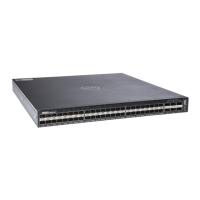
